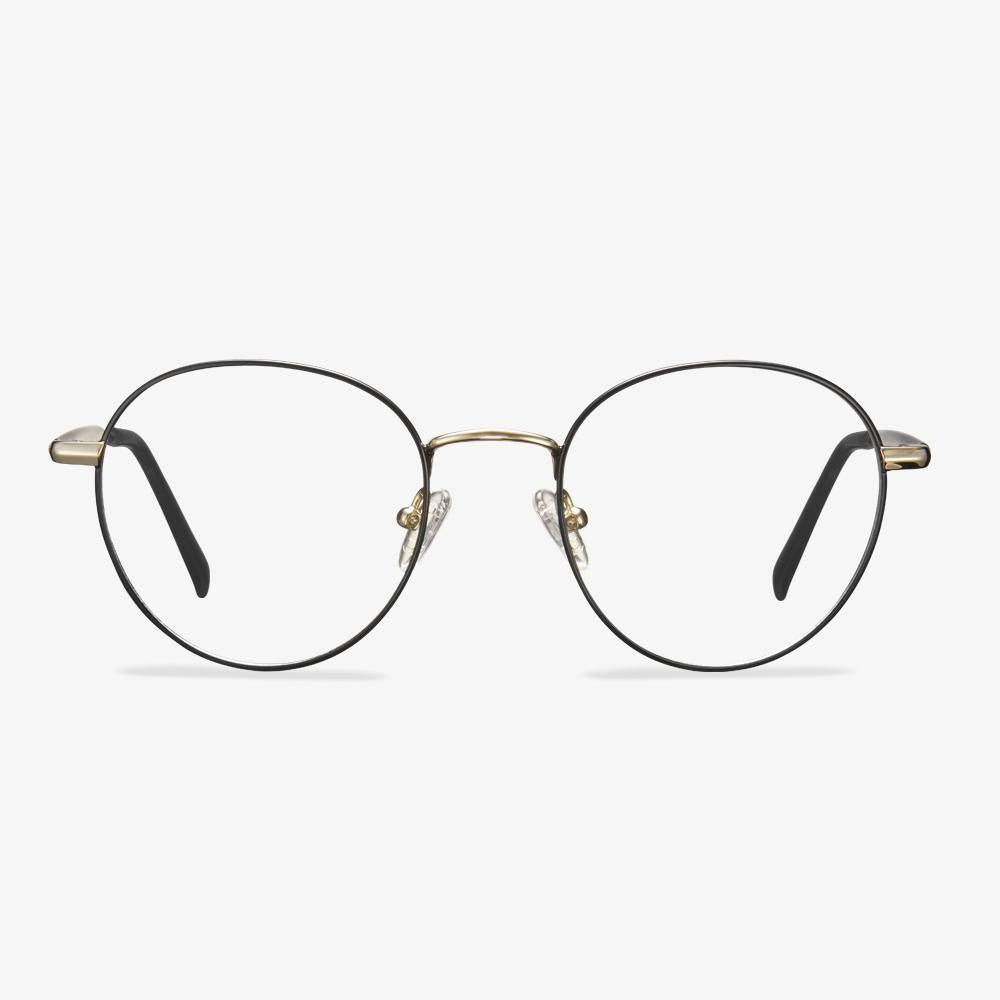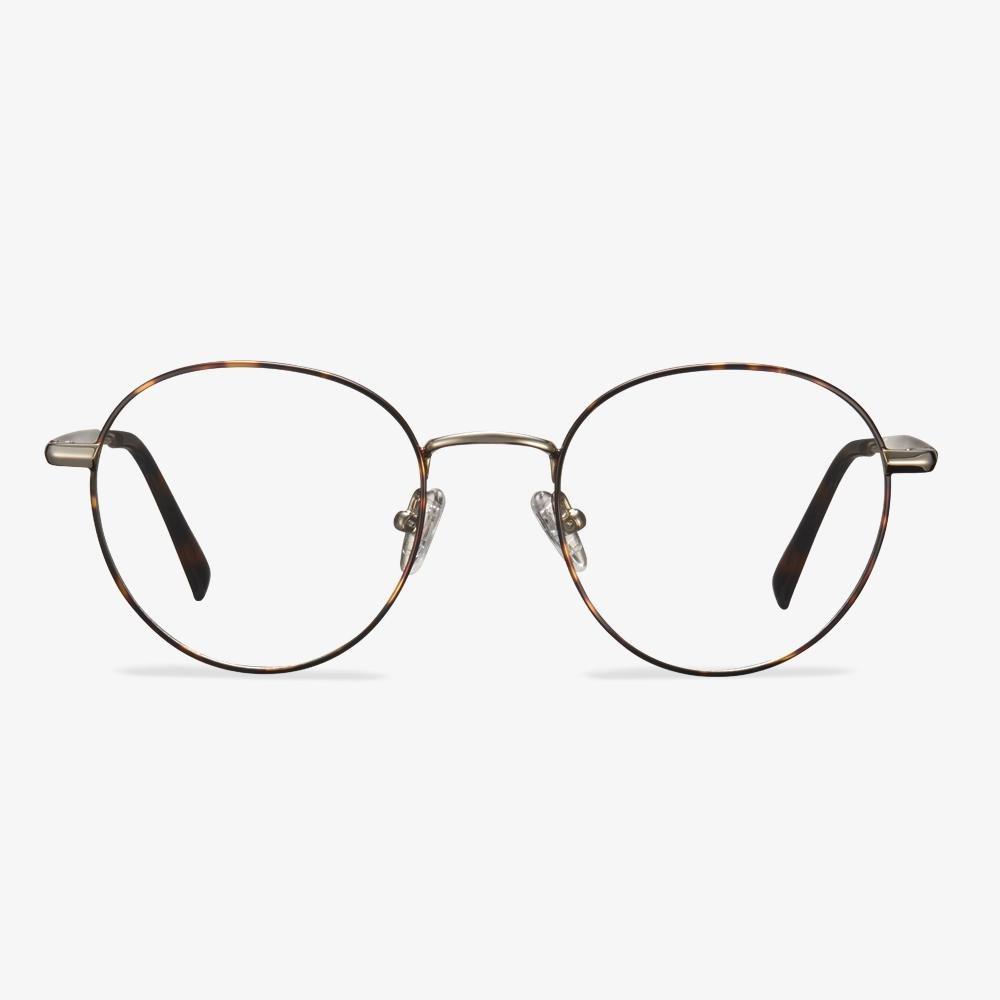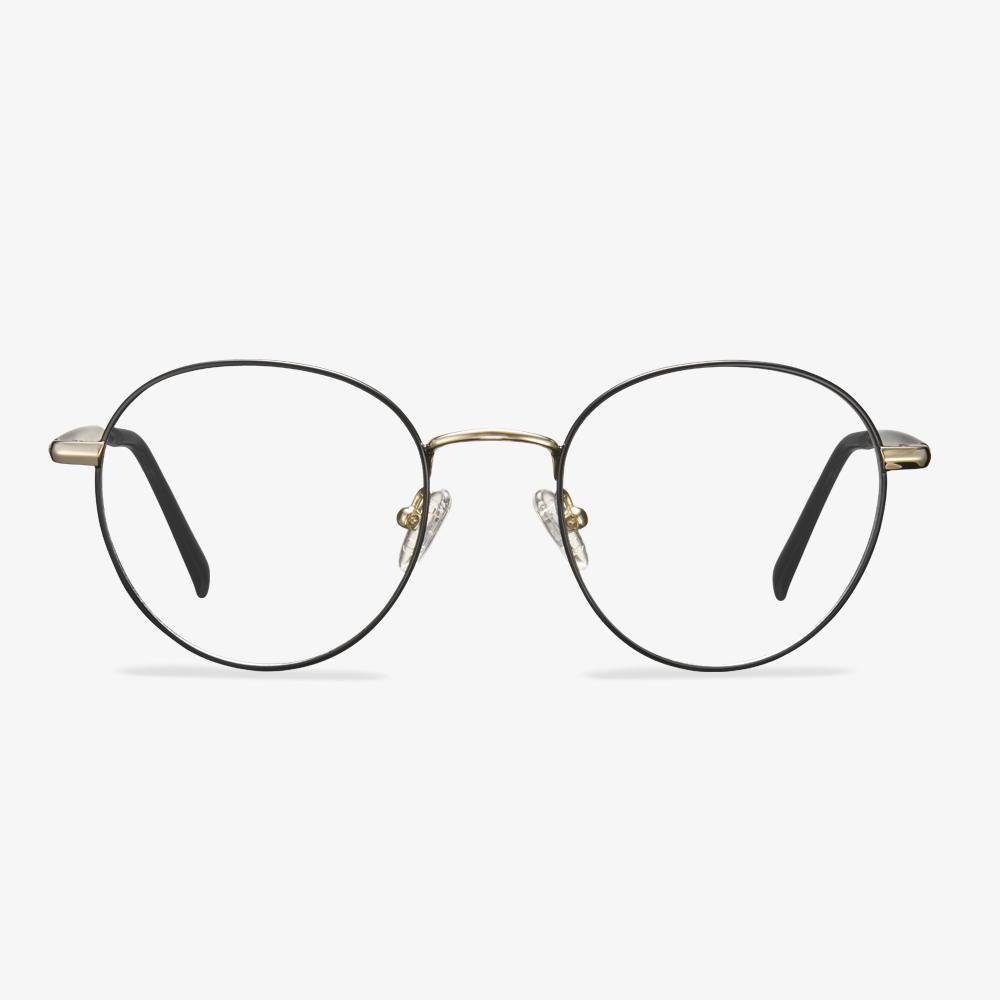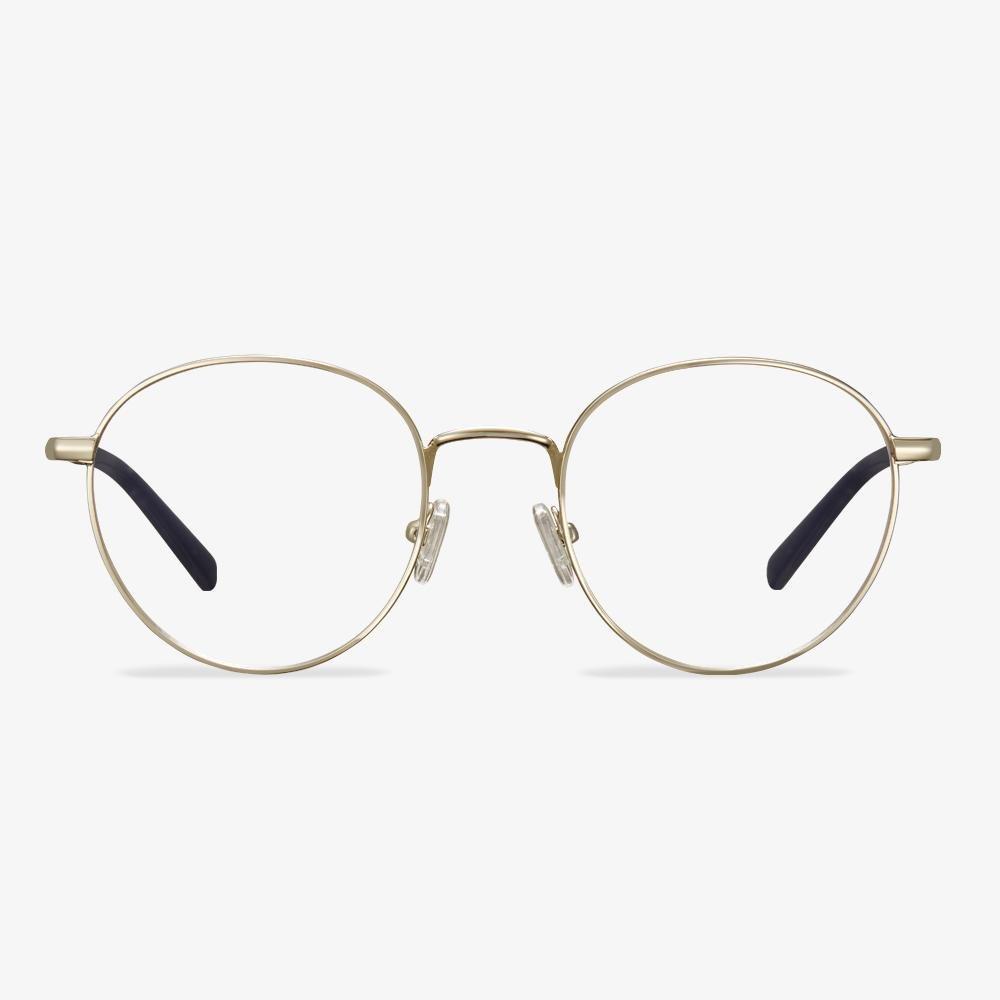Glasses for heart-shaped faces
This type of face has a wide forehead, broad cheekbones, and a pointed chin. It is called a heart-shaped face. The upper part of the heart-shaped face is relatively wide and flat, and the lower part of the line is uniform and smooth. The facial line, the proportion is very soft, giving a person an intimate intuitive feeling. Wearing longer or rimless glasses for this face shape will make you look cute.
Different Types of Eyeglass Frame Materials
Titanium: as for metal frame material, Titanium is one of the most popular ones. The titanium frame material can be bent and twisted and then come back to its original form. The quality of these frames is durable and reliable for rough use. The Titanium frame material is light.
Flexon: Flexon is a titanium alloy that is composed of around 50% titanium and 50% nickel. Flexon eyeglass frames are extremely flexible and can be twisted or bent to an extreme and can return to their original shape. The flexon frame material is popular among kids' glasses.
Beta titanium: this is an alloy mainly composed of titanium and a small amount of aluminum and vanadium. The beta-titanium has a memory feature and is mostly used in high-quality designer frames. The beta-titanium is toughness and light.
Monel: it is an alloy of nickel and copper. The monel frame material is cheap and discolor.
Beryllium: it is an alternative to titanium resisting corrosion and tarnishing, but it is cheap. The beryllium frame material is lightweight, strong, flexible and available in a wide range of colors. In addition, it is a good choice for those people with high skin acidity or those people who spend a large amount of time in or around salt water.
Besides the above plastic eyeglass frame materials and metal frame materials, there are some other frame materials available, such as aluminum, gold, silver or other biodegradables materials. You can choose the suitable one according to its performance, features, and price.
What’s more, you can choose glasses from Koalaeye Optical. It provides various kinds of glasses and frames, such as blue light blocking glasses, rimless sunglasses, and so on.
Advantages of progressive multifocal lenses
The progressive multi-focal lens has a number of different focal points from top to bottom. There's a smooth transition between seeing far and seeing close. There is no clear dividing line in the middle, like the myopia glasses, quite beautiful, and it is not dangerous. Because the added value is continuously and slowly increased in the gradient area, the wearer can get a continuous clear vision from the far point to the near point through the progressive lenses with the appropriate head position. In line with physiological optics, They help a better adaptation. Since the lens degree changes little by little, there is no phenomenon like jumping. Because the degree of the lens is gradual, so the vision from far to near changes slowly increase, which will not produce the adjustment of the eye fluctuation. It is not easy to cause visual fatigue. Without a degree line, the appearance will be more beautiful. Clear vision can be obtained at all distances within the visual scope. A pair of glasses satisfies both close and middle distances.
Blue light in natural light
Blue light is not the unique light emitted by electronic products, but the visible light that exists in natural light, usually with a wavelength of about 400-500nm. The blue light in the entire waveband can be subdivided into two parts. One part will cause optical damage to the retina of the eye and accelerate the oxidative senescence of cells in the macular area of the retina. Usually, the wavelength of this part of blue light is between 415-450nm, and its damage to the eyes is gradually accumulated and formed. There is also a part of blue light that is beneficial to our human body, that is, blue light with a wavelength of about 480nm. It can adjust biological rhythms and is helpful for sleep, mood, and memory. In addition, experiments have confirmed that daily outdoor activities in the sun can effectively prevent the occurrence of myopia, and short-wavelength blue light may play an important role.
The Advantages of Polycarbonate Glasses
In fact, polycarbonate glasses come with several benefits and this section will show some of them.
First, polycarbonate glasses are safe and are virtually unbreakable. A study found that polycarbonate glasses were more impact-resistance than glasses or other types of plastic lenses.
Second, polycarbonate glasses are thinner than other types of lenses. This feature makes them ideal for people who have strong prescriptions. Lighter and thinner eyeglasses are less likely to slip off your nose and are more comfortable for everyday wear.
Third, extended exposure to UV radiation from the sun can cause damage to your eyes and lead to some eye conditions such as cataracts or macular degeneration. Of course, polycarbonate glasses can block out harmful UV rays from the sun and provide good protection for your eyes.
However, there are some negative voices of polycarbonate lenses.
Warby Parker
Warby Parker started the Home optics industry with Home Try On, but the well-known startup's frames are becoming more common. Select 5 frames to test for 5 days and they will be mailed to you free of charge. Try it for five days and see which one you like. You can buy it yourself online. They'll send you a new one.
Why can't you wear expired contact lenses?
Contact lenses have a throwaway cycle. If the contact lens has been opened, the shelf life of the contact lens is calculated from the day it was opened. Contact lenses have a life cycle. The life cycle is the shelf life of contact lenses. For example, if you wear daily contact lenses, you will have to throw them away. If you wear monthly contact lenses, they will have a shelf life of one month. Even if you wear them only a few times, you will still have to throw them away. The shelf life of contact lenses is calculated from the day the lenses are taken apart, not from the number of days they have been worn.
After the shelf life of contact lenses, there will be some cases like lens aging, hardening, lens discoloration, decreased transparency, lens deformation, thickening, an increase of lens protein, and other precipitates. The microbe is easy to deposit, resulting in poor oxygen permeability. If you continue to wear it, it is easy to cause inflammation of the conjunctiva and corneal hypoxia, and the comfort level will be much worse. It is suggested to analyze the case according to your own care. Once the contact lenses have the above cases, they should be replaced in time.


















































